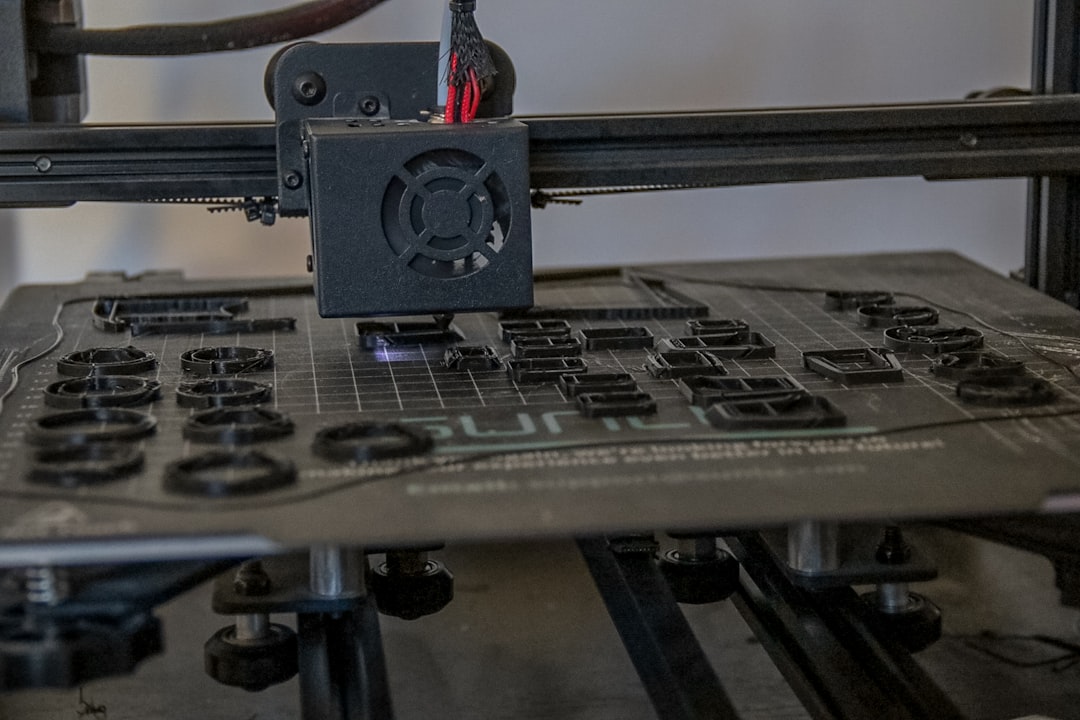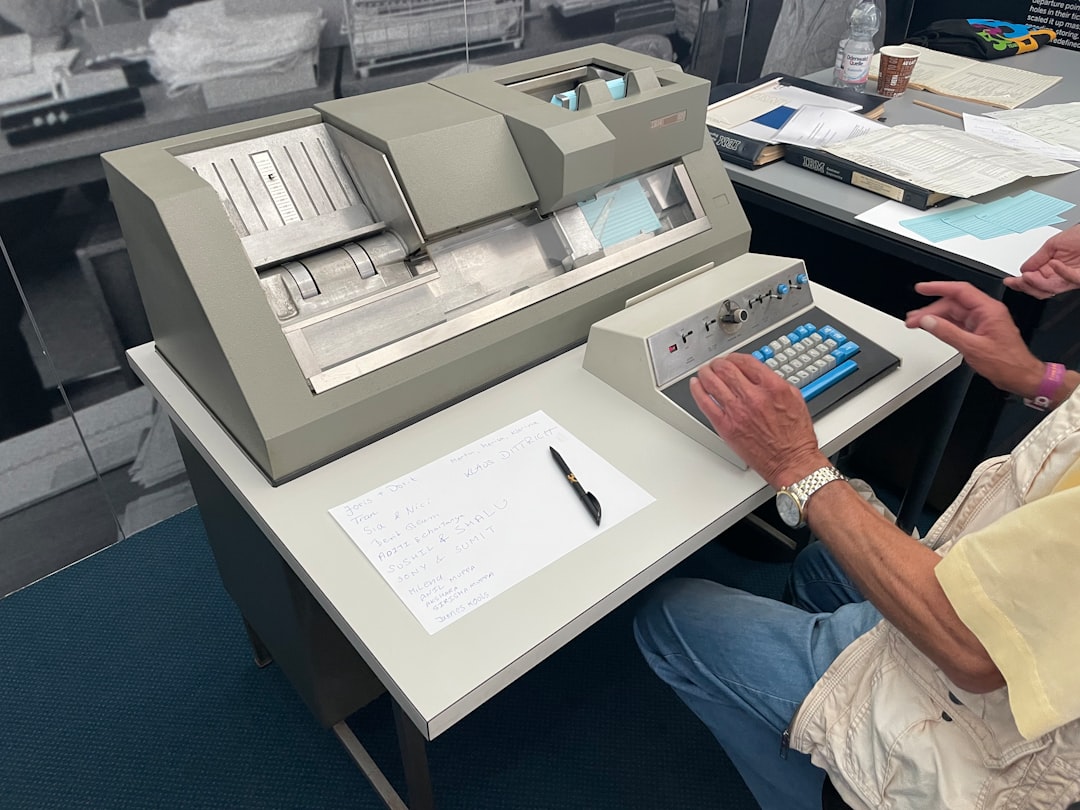QR codes have evolved from a novelty to a strategic powerhouse in bridging offline engagement with online action. For printing brokers, the frustration of missed high-value prospects and a lack of engagement visibility has made it increasingly difficult to prove ROI on print assets. QR codes now represent a frictionless, highly effective tool to attract clients, enhance print marketing, and deliver measurable results without requiring an app download or complex setup.
As print marketing materials and digital channels continue to converge, printing brokers are ideally positioned to offer interactive print marketing experiences that can drive conversions and build client loyalty. One of the core challenges in this space, missing out on promising leads who interact with physical collateral but never submit a form, is addressed by embedding QR technology. QR experiences allow brokers to capture audience intent in the moment, optimize marketing strategies across channels, and provide clients with actionable performance data that upgrades print from a static asset to a dynamic growth engine.
This article explores how QR code integration transforms traditional print workflows, replaces outdated manual processes, and addresses common industry hurdles. Printing brokers can stay competitive and innovative within the modern marketing supply chain by leveraging data-driven insights and responsive engagement strategies that connect every printed piece to a measurable digital outcome.
How to Drive Conversions in Printing Brokers Using QR Codes: A Step-by-Step Guide

Traditional print campaigns have long struggled with incomplete lead capture. High-interest prospects read a brochure, pick up a sample pack, or glance at a show banner, then vanish without leaving a trace. QR codes bridge the gap between physical marketing materials and digital outcomes, making it easier for printing brokers to help clients drive leads, track engagement, and deliver tangible ROI from print campaigns.
Here is how to apply QR codes with intent and precision:
- Replace outdated workflows: Static brochures, paper order forms, and manual lead tracking introduce delays and data loss. QR-enabled print pieces can launch mobile quote forms, auto-save contact details, or trigger chat with a sales rep. The result is a streamlined path from interest to conversion that surfaces previously anonymous interactions. Consider adding QR flows that share contact info.
- Define success metrics: Move beyond vanity metrics. Track scan-to-lead conversion rates, average time to follow-up, qualification rates by asset type, and revenue influenced by QR scans. These metrics counter superficial engagement measures and give clients a reliable lens on print performance.
- Design for behavior, not decoration: QR codes should be placed and framed where eyes naturally land and actions are likely. Use data from pilot campaigns to determine the best placements, CTAs, and creative treatments for high-intent segments like procurement managers or marketing decision-makers who are not yet in the CRM.
- Integrate with analytics and CRMs: Sync scans into tools that provide real-time tracking, journey visualization, and optimization prompts. Connect QR activity to your CRM so no lead is lost due to manual entry gaps or out-of-date spreadsheets. This closes the loop from first scan to final deal.
For printing brokers, the payoff is twofold. First, QR codes make print assets perform as interactive acquisition and retention channels. Second, modern platforms like Sona QR give brokers the infrastructure to deploy, manage, and analyze QR campaigns at scale, ensuring every high-fit prospect is captured and nurtured.
Why QR Codes Matter for Printing Brokers

Printing brokers often grapple with a nagging question: which print efforts generate high-value leads and which fade into anonymity. QR codes in marketing answer this with clarity by turning every piece of print into an onramp to measurable action.
- Bridge offline to online: Recipients of direct mail, flyers, catalogs, and signage can instantly take action: request a quote, view a portfolio, join a webinar, or claim a limited-time offer. A scan cuts the delay that so often erodes intent.
- Engagement without friction: No logins or app downloads are required for key actions. For brokers, this reduces abandoned quote requests and missed demo sign-ups while keeping the path to value as short as one scan.
- Update without reprint: Dynamic QR codes let brokers change destinations after printing. That means a static postcard can point to a fresh seasonal offer or a product launch without the cost and delay of reprints.
- Surface actionable data: QR dashboards reveal where, when, and how scans occur. Brokers can see which materials resonate with which audiences, identify accounts showing buying signals, and spot upsell moments across touchpoints like invoices, inserts, or event signage.
- Scale cost effectively: QR codes are inexpensive to generate and deploy across any print format. They also layer seamlessly onto existing workflows, so brokers can enhance what they already produce rather than reinventing it.
In practice, this matters on the ground. Appointment cards can carry a scan-to-schedule link that reduces phone tag. Posters and showroom signs can route to product configurators or price calculators. Flyers and catalogs can link to dynamic galleries that highlight in-stock or trending options with zero reprint cost. Every scan becomes a datapoint that proves value for clients and informs the next round of creative and placement.
Common QR Code Formats for Printing Broker Use Cases
A recurring frustration among brokers is the inability to tailor print for diverse objectives because traditional assets lack interactivity and traceability. The right QR formats close that gap by mapping physical media to precise digital actions.
- Web links: Direct scanners to landing pages such as quote request forms, service menus, portfolio galleries, case studies, or limited-time offers. Pair with UTM parameters to attribute traffic back to each specific print asset or campaign variant.
- vCards: Allow prospects to save a rep’s contact details instantly at trade shows, plant tours, and sales visits. This reduces missed follow-ups that otherwise depend on manual data entry from business cards.
- SMS or email triggers: Launch pre-filled messages for reorder requests, sample kit inquiries, or support tickets. This keeps workflows consistent and measurable while removing friction for the user.
- Wi-Fi access: Provide password-free connectivity at events, showrooms, or pop-ups. Combine with a brief opt-in screen that captures consent and purpose, then route to a curated experience once connected.
- App downloads: Auto-detect device and send users to the appropriate app store for proofing tools, AR visualizers, or loyalty programs. This ensures that app engagement can be marketed directly from print assets.
For printing brokers, dynamic QR codes are usually a better fit than static codes because they offer editing flexibility and performance tracking. Sona QR centralizes these formats in one platform, so brokers can spin up codes quickly, version them by channel, attach tracking parameters, and update destinations without reprinting when campaign requirements change.
Where to Find Growth Opportunities

Brokers often invest in print that looks great but fails to capture signals that drive revenue. Strategic QR placement turns passive impressions into measurable engagement at the exact moments when decisions are made.
- Trade shows and industry events: Place QR codes on booth backdrops, table toppers, literature racks, and badges. Route to a scan-and-book meeting page, a portfolio overview, or a lead capture form that offers a giveaway. Scans by time and location reveal which sessions drive the most interest. Add codes to event badges to streamline lead capture.
- Packaging, labels, and inserts: Add QR codes that open reorder forms, maintenance tips, or warranty registration. Use inserts in sample kits to invite quote requests and follow-up calls. This supports repeat business and reduces churn in the revenue you already won. Link packaging to helpful content with product packaging use cases.
- Point-of-sale materials: On counter cards, shelf talkers, or in-store posters, use QR codes to unlock upsells like premium finishes, rush options, or variable data printing. This helps capture incremental revenue while intent is high.
- Out-of-home signage: Window clings, bus shelter posters, vehicle wraps, and billboards can route to a short URL for quotes or local promotions. QR scans give you a read on passerby engagement that was previously invisible.
- Direct mailers: Assign unique QR codes to each version of a mailer. Link to personalized offers or pre-filled forms. Track response by segment to improve creative, offers, and audience selection in the next drop.
Used consistently, these placements create a network of interactive touchpoints. Brokers can see which formats and environments convert best, then optimize offers and creative to maximize ROI across seasons and segments.
Use Cases for QR Codes in Printing Brokers

Real-world challenges like unsubmitted quote requests and anonymous portal visits are common in print-driven campaigns. QR codes create a bridge from curiosity to commitment.
- Use case 1: Interactive estimate requests: Add QR codes to sample packs, catalogs, and trade show handouts that open a tailored, mobile-friendly quote form pre-filtered by product category. Outcome: Faster qualification, higher completion rates, and more accurate scoping with fewer email back-and-forths.
- Use case 2: Portfolio access via print ads: Place QR codes on magazine ads, flyers, and case-study one-pagers that link to dynamic galleries of recent work. Outcome: Proof of capability that stays current, reduces reprints, and shortens the path from interest to consultation booking.
- Use case 3: Print order tracking: Print QR codes on invoices, shipping labels, and packing slips that open live order status. Outcome: Lower support volume for “where is my order” questions, higher customer satisfaction, and more cross-sell opportunities through contextual offers displayed in the tracking view.
These use cases can be deployed quickly with dynamic QR links, then refined through scan analytics. As data accumulates, brokers can see which products, events, and formats generate the best pipeline and adapt accordingly.
How to Build High-Value Audiences for Retargeting with QR Code Campaigns
One persistent industry pain point is the inability to retarget anonymous print audiences or segment follow-up by intent. Each QR scan contains context that enables precise segmentation when captured and synced correctly.
- Create unique codes for each journey stage: Use distinct QR codes for awareness assets like event posters, consideration assets like product brochures, and conversion assets like pricing sheets or coupons. This automatically builds segment lists aligned to funnel stage for targeted messaging.
- Tag audiences by action: Differentiate scans triggered by sample requests, quote requests, proof approvals, order tracking, or support interactions. Each action implies a different need and timeline, so the post-scan experience and nurture sequence should match.
- Analyze location and timing: Scans at a trade show booth during keynote breaks signal high intent. Evening scans on packaging may indicate post-purchase interest or support needs. Use these insights to prioritize lead follow-up and refine media placement.
- Sync segments to CRM and ad platforms: Push scan data into HubSpot or Salesforce to trigger email or SMS sequences. Create custom audiences in Meta or LinkedIn for retargeting that references the exact product or offer scanned. This closes the gap between an offline touch and a personalized digital response.
For printing brokers, powerful audience building turns print from a one-off impression into a living, data-driven relationship. Platforms like Sona QR make it possible to capture that context in real time, then orchestrate follow-ups across channels.
Integrating QR Codes into Multichannel Marketing for Printing Brokers
Printing brokers often operate across multiple media but struggle to connect the dots between channels. QR codes act as connectors that unify data and experiences, so print can fuel conversions across the entire marketing mix.
- Brochures and print collateral: Add QR codes that route to tailored landing pages, downloadable spec sheets, or calculators. Each scan signals intent and enriches lead profiles, while analytics reveal exactly which pieces perform. See ideas for brochures.
- Social media and UGC campaigns: Use QR codes on swag, packaging, or event signage to prompt photo sharing, contest entries, or review submissions. Track participation rates and user content to fuel social proof and remarketing.
- Direct mail: Assign unique QR codes to each list segment and creative variant. Route to personalized offers or quote forms that match the mailer theme. Real-time scan data lets you pause underperforming variants and scale winners.
- Video and digital signage: Replace hard-to-type URLs with scannable on-screen codes during webinars, lobby screens, or booth demos. Immediate access to content reduces drop-off and adds a clear attribution trail. Explore interactive digital signage.
- Conferences, trade shows, and client events: Put QR codes on booth backdrops, lead magnets, and business cards. Tag scans by location or session to prioritize outreach and match content to interests expressed on-site.
By layering QR codes across channels, brokers build a connected offline-to-online funnel. Centralized tools like Sona QR bring reporting into one place, syncing scan events with CRM and ad platforms to turn engagement into pipeline.
Step-by-Step QR Campaign Execution Checklist
Uncoordinated launches and weak post-scan journeys can sink otherwise strong print campaigns. A structured approach improves conversion rates and makes ROI visible in real time.
Before you start, pick one priority goal: lead capture, order acceleration, or account expansion. Then work through the steps below and record your benchmarks so the team learns from each iteration.
Step 1: Choose Your Use Case
Clarify the business outcome and how a scan can move someone forward immediately. Map the scan destination to the user’s context, such as a quote request from a catalog or a reorder form from packaging.
- Define the campaign goal: Increase quote requests from event attendees, drive sample kit requests from direct mail, or reduce support touchpoints through order tracking.
- Align the QR code to the outcome: A catalog should point to product-specific forms, a trade show poster should route to a meeting scheduler, and a package insert should open a reorder flow.
- Identify the audience and environment: Determine who will scan, where they are, and what device they will use. This informs QR size, CTA, and landing page design.
Step 2: Pick a QR Code Type
Choose between static and dynamic codes based on your need for flexibility and analytics. Most growth-focused campaigns benefit from dynamic codes.
- Static codes for permanent destinations: Use for evergreen PDFs, a general contact page, or a showroom Wi-Fi login that rarely changes.
- Dynamic codes for agility and data: Use for trackable, editable links where you will run tests, refresh offers, or retarget scanners. Dynamic codes also allow for A/B testing and automated routing rules.
- Standardize parameters: Attach UTM tags or campaign identifiers within Sona QR so downstream analytics and CRM systems attribute traffic correctly.
Step 3: Design and Test
Treat QR codes as part of the creative system. The visual frame, CTA, and placement should invite action while meeting accessibility and brand standards.
- Brand the code and frame: Add a recognizable brand mark and a clear border. Use high-contrast colors that pass accessibility checks and avoid overly complex patterns that can reduce scannability.
- Write a benefit-first CTA: Replace “Scan me” with “Scan to get a quote,” “Scan to see finishes,” or “Scan to track your order.” The value proposition does the heavy lifting.
- Ensure scannability under real conditions: Test print proofs on various stocks, sizes, and finishes. Scan at different angles, distances, and lighting. Confirm that small-format codes still work on curved surfaces like bottles or tubes.
- Optimize the destination: Build mobile-first landing pages with minimal fields and clear next steps. Pre-fill forms when possible and reduce taps to completion.
Step 4: Deploy Across Channels
Roll out codes where they will have the most impact, matched to the buyer journey and environment. Coordinate with sales and customer success so they can reference the same CTAs.
- Match placements to behavior: Direct mail for high-consideration offers, point-of-sale for quick add-ons, and event signage for booking meetings.
- Version by audience: Create unique codes for enterprise prospects, SMB buyers, or reseller partners to tailor the experience and measure performance by segment.
- Coordinate timing: Schedule print drops and digital retargeting windows together. Ensure landing pages are ready with correct inventories and staffing for timely follow-ups.
Step 5: Track and Optimize
Monitor performance and adapt while the campaign is live. Use data to double down on what works and retire what does not.
- Track scans by context: Time of day, device type, and location illuminate intent and channel fit. Use Sona QR to consolidate and visualize this data.
- Measure conversion and drop-off: Connect scans to form submissions, booked meetings, or orders. Identify where people exit the journey and remove friction.
- Experiment iteratively: Test alternate CTAs, creative frames, landing page layouts, and offers. Move budget to top performers and document learnings for future cycles.
A final pass after each campaign should capture insights across creative, placement, and follow-up sequences. Roll these into a playbook so future print runs embed your best practices from the start.
Tracking and Analytics: From Scan to Revenue

Historically, measuring print effectiveness relied on anecdote and lagging indicators. QR analytics change this by capturing intent at the source, then connecting it to pipeline outcomes in a way clients can see and trust.
With a platform like Sona QR and Sona, an AI-powered marketing platform for identity resolution and revenue attribution, brokers can unify scan data with web visits, ad clicks, email engagement, and CRM activity. This makes it possible to see how a scan at a trade show leads to a demo, then to a proposal and a purchase.
- Track every scan event: Capture timestamp, device type, and location. Tie each scan to a specific asset and campaign variant to identify winners quickly.
- Measure engagement by channel: Compare results across direct mail, events, in-store materials, and OOH. Use these insights to optimize media spend and creative emphasis.
- Respond in real time: Trigger alerts to sales when a target account scans a pricing sheet. Switch destinations on underperforming codes to test a stronger offer mid-campaign.
- Sync to CRM for action: Send scan data to HubSpot or Salesforce with contact enrichment. Update lead scores, trigger nurture flows, or open tasks for SDR outreach.
- Attribute revenue accurately: Use offline attribution and multi-touch models to connect scans from unknown visitors to known buyers. Show how QR engagement contributes to pipeline progression and closed-won deals.
By centralizing analytics, brokers replace guesswork with evidence. This elevates conversations with clients from subjective debates to data-backed decisions about where to invest next.
Tips to Expand QR Success in Printing Brokers
Even strong QR programs can stumble when attribution is weak or follow-up is inconsistent. Use the following practices to maximize impact across the print lifecycle.
- Assign unique codes to every asset: Treat each brochure, mailer, insert, and sign as a micro-campaign. This prevents data from blending together and reveals precisely which pieces drive engagement.
- Use UTM parameters consistently: Add source, medium, and campaign fields to every destination URL. This ensures analytics platforms attribute traffic correctly and allows clean reporting across variants.
- Automate post-scan workflows: Trigger nurture emails, SMS reminders, or sales tasks when someone scans. A prospect who scans a pricing sheet should receive a follow-up within minutes, not days.
- Educate staff and customers: Train sales reps to point out QR codes and explain the benefit. Add brief, benefit-led CTAs that set expectations, such as “Scan to see live stock and finishes” or “Scan to get a 10-minute quote.”
- Expand creatively across the customer journey: Place reorder QR codes on invoices to streamline repeat business. Add loyalty program codes on packaging to encourage repeat purchases. Use QR-enabled tutorials on product inserts to reduce support burden and increase satisfaction.
These practices compound over time. As your library of QR-enabled assets grows, your dataset becomes richer and your ability to route the right message to the right person at the right time improves.
History and Evolution of Printing Brokers
Printing brokers began as intermediaries who matched client needs with the right production partners. Their value rested on vendor relationships, price negotiation, and quality management. The work was transactional and heavily reliant on paper-based processes that obscured downstream engagement.
As marketing shifted to performance accountability, clients demanded more than delivery and pricing. They wanted proof of impact. Brokers responded by layering in design services, campaign management, and now data-enhanced experiences that connect print to digital. QR technology accelerated this evolution by giving brokers a way to capture, segment, and serve audiences in real time from any printed surface.
Today, leading brokers operate at the intersection of creative, logistics, and analytics. They embed QR codes across assets, integrate with client tech stacks, and present dashboards that translate print engagement into sales outcomes. This higher level of service has redefined the broker’s role from order taker to growth partner.
The Role of Printing Brokers in the Supply Chain
Modern printing brokers coordinate a complex ecosystem: creative development, substrate selection, specialty finishing, kitting, fulfillment, shipping, and now data integration. Their unique vantage point allows them to unify strategy and execution across vendors and channels.
With QR codes and platforms like Sona QR, brokers can do the following with greater velocity:
- Align print production with digital CTAs and analytics. A catalog can point to an AR visualization or scheduling tool that the client’s team recognizes in their CRM within minutes.
- Create feedback loops that inform production and marketing. Scan data from inserts or packaging can reveal which product lines or finishes generate repeat business, guiding purchasing and campaign priorities.
This integrated role reduces waste, minimizes reprints, and establishes brokers as stewards of measurable growth. Clients under budget pressure value partners who can prove impact and adapt quickly without costly production resets.
Industry Insights, Regulations, and Trends
Printing brokers face a new set of expectations: sustainability, compliance, and measurement. Environmental concerns influence substrate choices and run sizes. Privacy rules shape how scan data is collected and used. Performance metrics determine renewals and expansions.
- Privacy and consent: Treat scan data as personal data when it can be linked to individuals. Use clear CTAs that explain what happens after the scan. Offer opt-ins for email or SMS and respect regional regulations like GDPR and CCPA.
- Copyright and brand control: Dynamic destinations make it easy to keep content current, but they also require governance. Establish approvals for updates and version control for downloadable assets to protect brand and legal integrity.
- Sustainability and efficiency: By using dynamic QR codes, brokers can extend the lifespan of printed materials, reducing reprints and waste. This supports sustainability goals while preserving agility.
Market momentum is on the side of connected print. Brokers who deploy real-time QR insights, identify account-level signals, and personalize follow-up consistently outperform those relying on legacy tactics. The shift from static to interactive print is not a trend; it is a durable change in how buyers research, evaluate, and purchase. Brokers who build QR-driven playbooks today will lead in client acquisition and retention tomorrow.
QR codes have become a transformative strategy for printing brokers, empowering them to turn every print material into a digital entry point and every client touch into a trackable action. By integrating interactive QR experiences, brokers can overcome persistent pain points, from missed high-value prospects and anonymous website traffic to incomplete post-sale engagement. The path to value is straightforward: match each printed piece to a purpose, design with intent, and measure everything.
With the right blend of technology and workflow integration, printing brokers can capture, convert, and retain clients through connected customer journeys and actionable analytics. Sona QR provides the infrastructure to generate dynamic codes, manage destinations, unify data, and sync with CRMs and ad platforms. Sona.com extends this by linking scans to revenue with identity resolution and multi-touch attribution. Start creating QR codes for free.
Conclusion
QR codes have transformed the printing brokers industry from traditional, static transactions into dynamic, measurable growth opportunities. By integrating QR codes, printing brokers can streamline customer acquisition, enhance client interactions, and track the performance of their marketing materials with real-time data. Imagine instantly identifying which print campaigns generate the most leads and adjusting your approach without the cost of reprinting.
With Sona QR, you gain the power to create dynamic, trackable QR codes that update on the fly, connect every scan directly to revenue, and provide actionable insights to optimize your sales funnel. No more guesswork—just smarter, more efficient campaigns that drive conversions and build lasting client relationships.
Start for free with Sona QR today and transform every printed piece into a powerful tool for growth and success.
FAQ
What are the benefits of using QR codes in print marketing for printing brokers?
QR codes bridge offline print materials to online actions, enabling printing brokers to capture leads, track engagement, deliver measurable ROI, update content without reprints, and provide actionable data to optimize marketing strategies.
How can printing brokers integrate QR codes into their print marketing materials effectively?
Printing brokers should align QR codes with clear campaign goals, choose dynamic codes for flexibility and tracking, design with brand and user behavior in mind, place codes where users naturally look, and integrate scan data with analytics and CRM systems.
What are some innovative use cases for QR codes in print marketing for printing brokers?
Innovative use cases include interactive estimate requests, portfolio access via print ads, order tracking on invoices, Wi-Fi access at events, app downloads from print collateral, and using QR codes on packaging, trade show materials, direct mailers, and point-of-sale displays.
How should printing brokers choose a reliable printing broker service for their marketing needs?
Printing brokers should select partners that offer integrated QR code solutions with dynamic code management, real-time analytics, CRM sync, and support for multi-channel campaigns to ensure measurable and adaptable print marketing performance.
What are the best practices for creating interactive print marketing experiences using QR codes?
Best practices include defining specific business outcomes, using dynamic QR codes with UTM parameters, designing branded and scannable codes with benefit-focused CTAs, testing codes in real-world conditions, deploying codes matched to buyer journeys, and continuously tracking and optimizing campaigns.





















